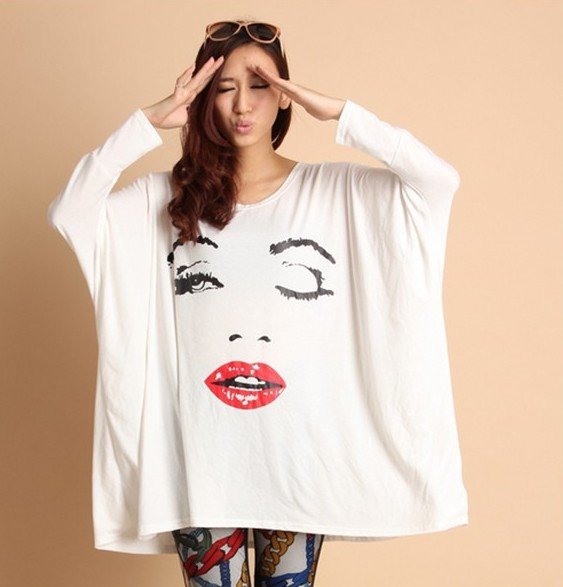Tunic T Shirts Definition
Source(Google.com.pk)Tunic t shirts is any of several types of clothing for the body, with or without sleeves, and of various lengths reaching from the hips to the ankles. The name derives from the Latin tunica commonly worn by both men and women in Ancient Rome, which in turn is based on earlier Greek garments.
The Roman tunica was worn by citizens and non-citizens alike; citizens, though, would wear it under the toga, especially at formal occasions. The length of the garment, the presence or lack of stripes, as well as their width and ornamentation, would indicate the wearer's status in Roman society. Soldiers, slaves and manual workers generally had tunics to a little above the knee; those in more sedentary occupations to about the ankle (unless they were expecting to ride a horse, when a shorter one would be worn).
Greek tunic
The tunic was also worn by the ancient and Byzantine Greeks and is very similar to the chiton, which looked like a jacket. In Ancient Greece, a person's tunic was decorated at the hem-line to represent the city-state in which he lived. The tunics were either dyed with bright colors or bleached white.Roman legionary tunic
Underneath his armor, the Roman legionary wore a (usually woollen) tunic. There is considerable debate today as to whether the typical Roman legionary's tunic was undyed or dyed red using madder dye; a number of works of art and written descriptions contemporary to the Roman Empire contradict each other on this point. Alternately, it is possible that Roman legionary officers wore red tunics, while rank-and-file soldiers wore undyed tunics.
The tunic originally worn by the Roman legionary consisted simply of a long piece of rectangular cloth sewed to an identical piece, with holes for the arms and head simply left unsewn. Later, it became fashionable for tunics to be produced with sleeves and worn with braccae. This was especially the case in relatively cold northern territories such as Britain and Germany where similar clothes were already in existence among the native populations.Medieval tunic
Following the fall of the Roman empire, the tunic continued to be worn with varying sleeve and hem lengths throughout Europe during the Middle Ages. Often reaching the knees or ankles, it was usually worn over underclothes consisting of a shirt (usually hip-length or longer) and drawers (usually knee- or ankle-length pants related to braccae). It may be accompanied by hose. Tunics worn during the Early Middle Ages often featured decorative embroidery or tablet-woven braids along the neck, hem and wrists. This was the case, for instance, with tunics worn by both rich and poor Anglo-Saxons before the Norman Conquest.
19th century
Around 1830, small boys began to be dressed in sashed or belted tunics over trousers, a fashion which replaced the earlier skeleton suit.
Modern tunic
In Western culture, its use continues primarily in a religious and uniform context. It is the primary garment worn by the clergy, and members of religious orders. The religious tunic reaches to the feet. It is also the name often given to the coat worn by military and police personnel, usually close-fitting.
Tunic T Shirts Images Picutres Photos Designs 2013

Tunic T Shirts Images Picutres Photos Designs 2013


Tunic T Shirts Images Picutres Photos Designs 2013


Tunic T Shirts Images Picutres Photos Designs 2013

Tunic T Shirts Images Picutres Photos Designs 2013


Tunic T Shirts Images Picutres Photos Designs 2013

Tunic T Shirts Images Picutres Photos Designs 2013

Tunic T Shirts Images Picutres Photos Designs 2013

Tunic T Shirts Images Picutres Photos Designs 2013

Tunic T Shirts Images Picutres Photos Designs 2013


No comments:
Post a Comment